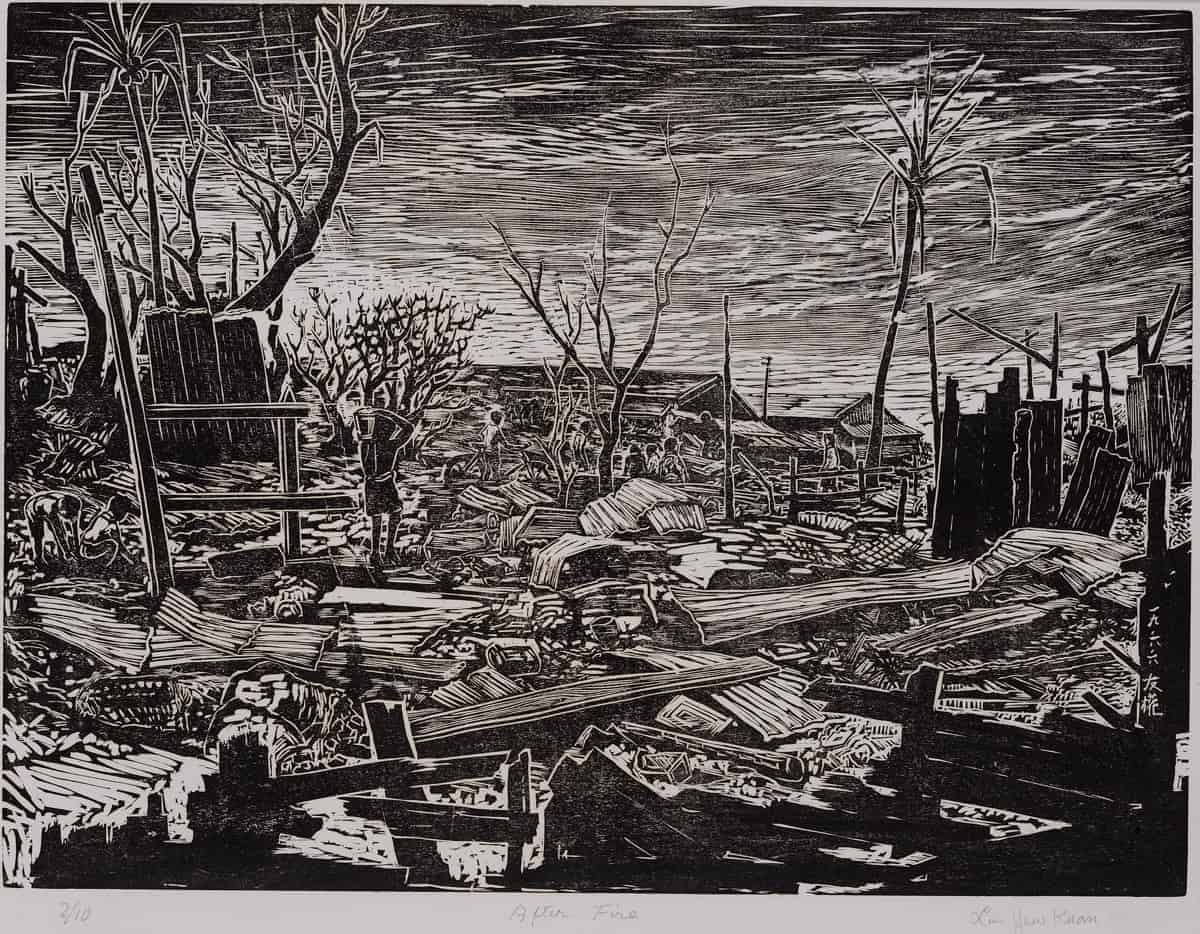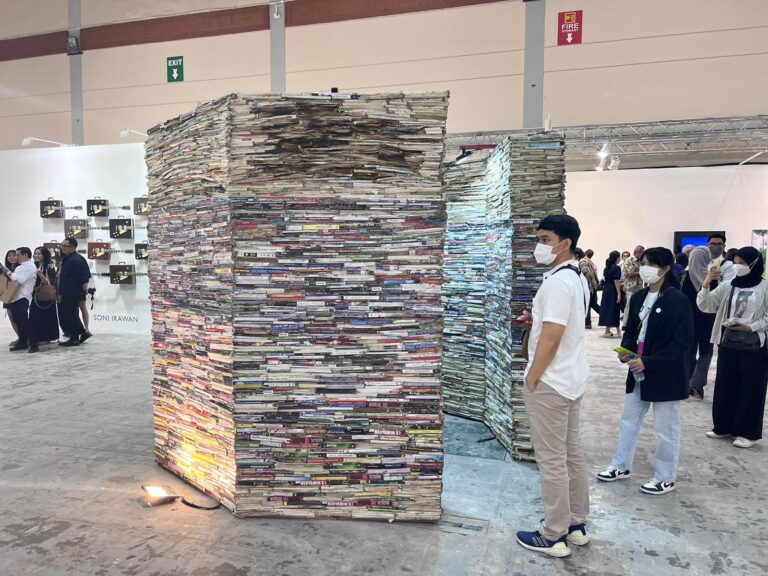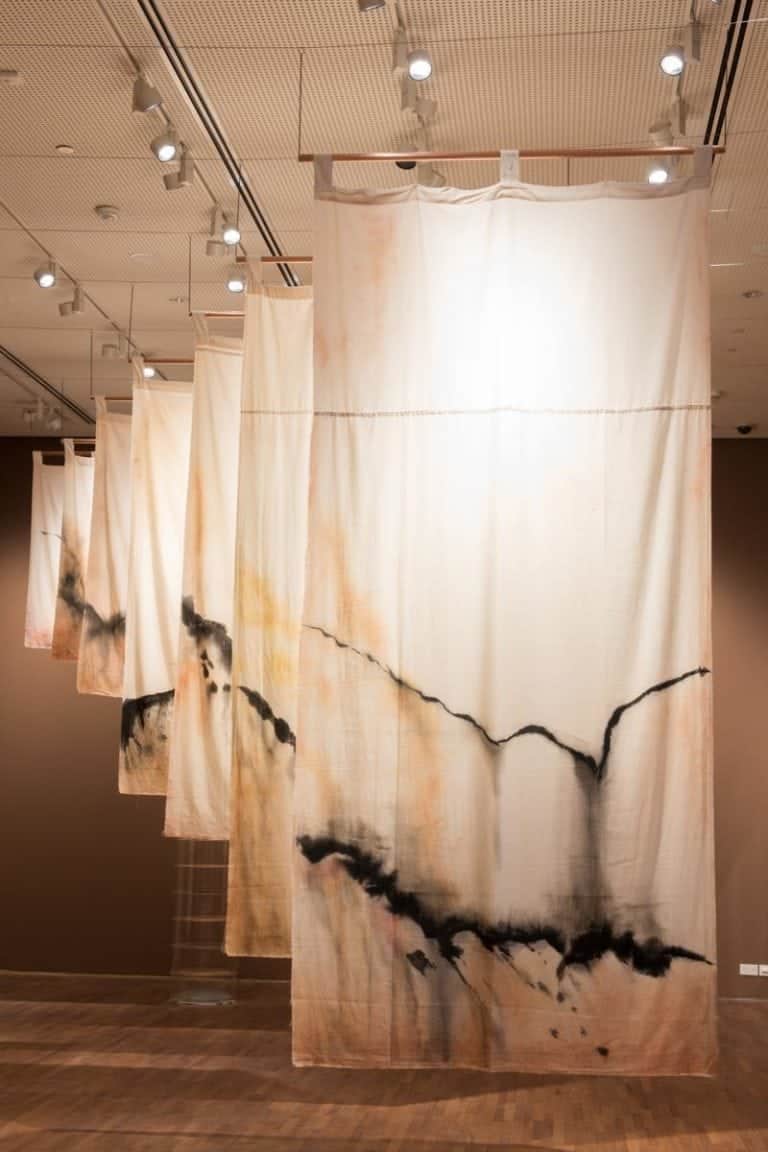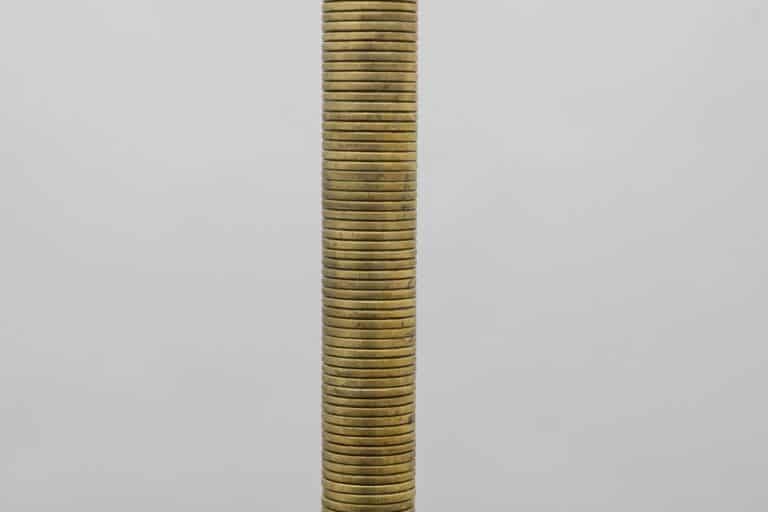After Fire (1966) by Lim Yew Kuan is but one of a collection of extraordinarily detailed woodcut prints in the National Gallery Singapore’s permanent collection.

The development of woodcut printing in Singapore is one which is interlocked with the political history of the country. The method originated from China where it was used to create anti –Japanese propaganda materials targeted at the Chinese in Malaya and Singapore, in the 1930s. The woodcut printing technique was an easy and cheap way to disseminate simplified and eye-catching political messages to the masses, who may or may not have been literate.
Broadly, the technique involves carving a design into a wooden block (i.e. the design is superimposed on the wood and the parts of the wood between the lines of the design are carved out). The wooden block is then inked, and the image is “stamped” onto another surface (typically paper, or cloth). In its simplest iteration, only a single dark colour is used and the resultant work can be easily reproduced in black and white.
Lim Yew Kuan was a founder of the Equator Arts Society, an artist group established in 1956 with strong anti-colonial and social realist leanings, and whose works often engaged with the lived realities of the common man. Lim’s father, Lim Hak Tai was the founding principal of the Nanyang Academy of Fine Arts in Singapore, a role which the younger Lim went on to assume upon the death of his father. In 2011, Lim Yew Kuan received the Cultural Medallion for his contributions to the visual arts in Singapore.
The woodblock print After Fire depicts the aftermath of the Bukit Ho Swee fire of 25 May 1961, a calamitous event which led to the destruction of 2,200 squatter houses and left 16,000 persons homeless. Ironically, the fire paved the way for the construction of the first Housing Development Board flats in Singapore. It was the largest fire in Singapore’s history and there were rumours at the time that it might have been caused by some form of government-backed arson so that new plans for public housing in Singapore could be easily implemented. (See, for example, academic Loh Kah Seng’s article Fires and the Social Politics of Nation- Building in Singapore, with an interesting counterpoint in this AsiaOne article on a survivor’s personal experience in being re-homed).
Looking at Lim’s print, we can see first and foremost, an image of devastation and desolation as a result of the fire which tore through the attap houses that characterised kampung living in Singapore at the time. However, academic Kevin Chua notes in his essay The Teak of Neoliberalism that,
“it is interesting, perhaps crucial, that a few trees remain: scarred and burnt, they cry to the sky and hint at a possibility that some individuals, maybe even a community, might survive this disaster.”
A closer look at the work also reveals Singaporean multicultural references. Chua, for example, points out the biggest single human figure in the mid-ground of the work. He offers the view that this “solitary man” appears to be salvaging burnt remnants and adding these to the basket of scraps on his back. He notes that the man resembles the figure of a “rag and bone” man—known in Singapore colloquially as the karung guni man. The bare trees and burned – out fences in the work also appear to resemble bungga manggar and the crucifixes of Christian cemeteries.
Thus, although the woodcut may (at first glance), appear to be two-dimensional and singular in its depiction of the fire, subtle details reveal the lived realities of Singapore’s cultural melting pot.










